
Markets don’t like surprises, and last week brought a big one. U.S. President Donald Trump called on the Federal Reserve to cut interest rates—loudly and publicly—just as his own tariff policy stirred fresh concerns about inflation and global growth. The timing was no accident. With prices for energy, eggs (down 69%), and general inflation trending lower over the past two months, Trump is arguing that now is the moment for Chair Jerome Powell to act. According to him, jobs are up, the economy’s on solid ground, and the Fed has a clear opening to lower rates.
That message landed in an already anxious environment. The market, still digesting the impact of new tariffs announced on Wednesday, quickly shifted its outlook. Just a week ago, traders only gave an 18.5% chance of a 25 basis point rate cut in May. Now, that number has jumped to over 30%. But the real shift is in June: markets now price in a 94.5% chance of a cut, with more expected in July, September, and even December.
This marks a fast reversal. Before the tariff headlines, most expected the first move in July at the earliest. Now the market is betting the Fed may move sooner—and keep going.
Trump’s pressure on Powell is nothing new, but it’s resurfacing at a time when traders are already on edge. The new tariffs sparked fears that consumer prices could rise again and global trade could take another hit. On Wednesday, Powell addressed those concerns head-on. Speaking in Virginia, he acknowledged the tariffs could boost inflation and slow growth, but he urged caution. The Fed, he said, needs more clarity before it adjusts policy.
That puts Powell and the market on different pages. While the Fed wants to wait and watch the data, the market is already leaning hard into a rate-cut narrative. Traders are trying to get ahead of what they believe is inevitable. It’s a classic tug-of-war: one side driven by caution, the other by anticipation.
This isn’t the first time this kind of split has happened. In 2019, the market saw trade tensions brewing and began pricing in rate cuts before the Fed acted. Eventually, the Fed gave in. But in 2023, after the collapse of SVB and others rattled the banking sector, traders again expected rate cuts. The Fed stayed put, focused on inflation, and was proven right. That back-and-forth is fresh in everyone’s minds now. So the big question is—who’s reading the moment better this time?
The answer depends on how the next round of data plays out. If inflation cools further—especially in sticky categories like services and housing—and if growth shows signs of fading, the Fed may pivot. But if price pressures stick around, even at these lower levels, Powell could hold the line. That would leave the market out over its skis once again.
Key Movements This Week
While broader narratives around inflation, tariffs, and Fed policy dominate headlines, the week’s price action reveals how traders are tactically positioning themselves in the near term. We’ve seen a decisive break in momentum across multiple markets, with several major assets testing key structural levels—some confirming trends, others hinting at possible reversals. As we step through this week’s movements, we’re prioritizing structure over noise and watching for consolidation zones that could shape the next directional leg.
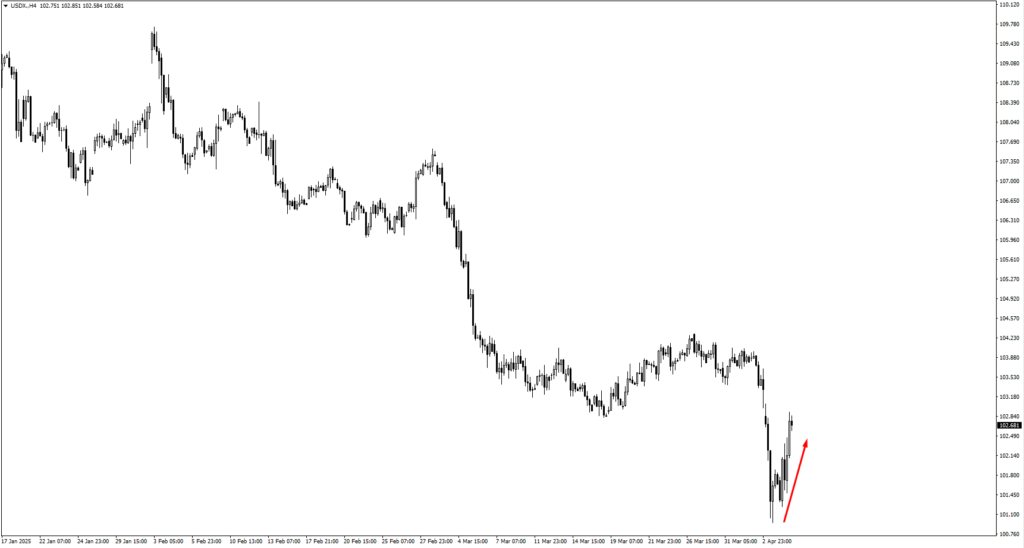
The US Dollar Index (USDX) climbed from its monitored 101.00 area and is now approaching 103.80, a resistance level that could either cap the rally or, if broken, confirm a new bullish leg. However, a failure to reach 103.80 followed by an impulsive downturn would turn our focus back toward 100.20.
EURUSD sold off from the 1.1150 zone. If price continues to weaken, 1.0850 becomes the next area to watch. However, if the pair stabilizes and bounces without even testing that lower level, eyes turn back to 1.1220—a resistance level that could define the upper boundary of the current range.
GBPUSD has drifted lower but notably did not first test the 1.3250 monitored area, making this decline less structurally clean. Now, we’re watching the 1.2820 to 1.2780 region for potential reaction.
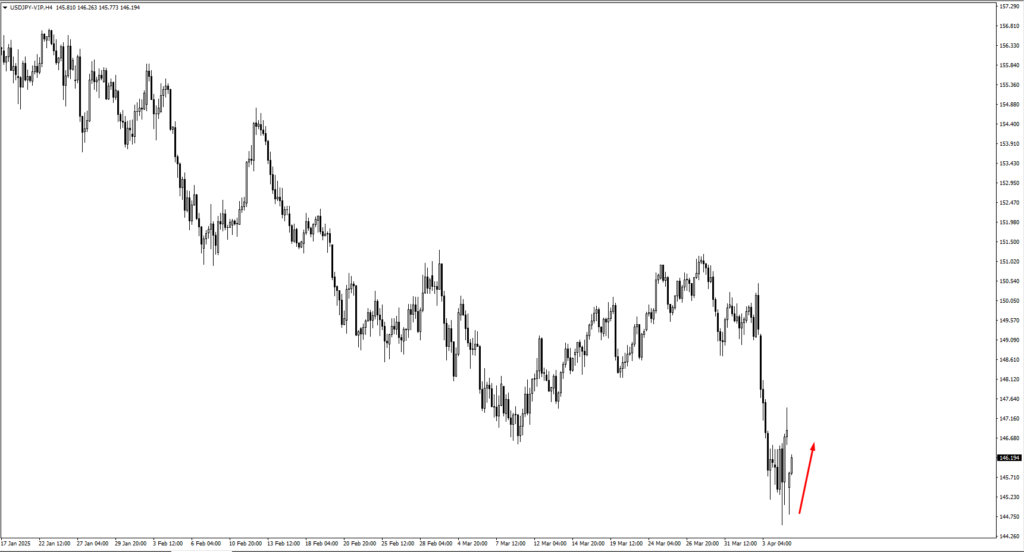
In yen pairs, USDJPY broke below the 145.91 swing low and bounced from the 144.50 zone. That level may mark a tentative bottom, but confirmation is lacking. A consolidation around 149.90 would offer clearer signals on whether sellers are taking profits or preparing for another leg down.
Similarly, USDCHF bounced from 0.8460, but whether this is the low remains to be seen. We’re watching 0.8760 as a key test area if price begins to consolidate.
AUDUSD came under pressure after testing 0.6380, with sellers stepping in. If the pair consolidates further, we’ll look to 0.6200 as a zone for bearish continuation patterns.
NZDUSD dropped from the 0.5870 level. If it retraces higher, the 0.5700 zone may act as resistance. The RBNZ’s rate decision midweek could bring further volatility to this pair.
USDCAD bounced off 1.4030, but hasn’t confirmed strength. The next level of interest sits at 1.4110, assuming the pair consolidates and holds its gains.
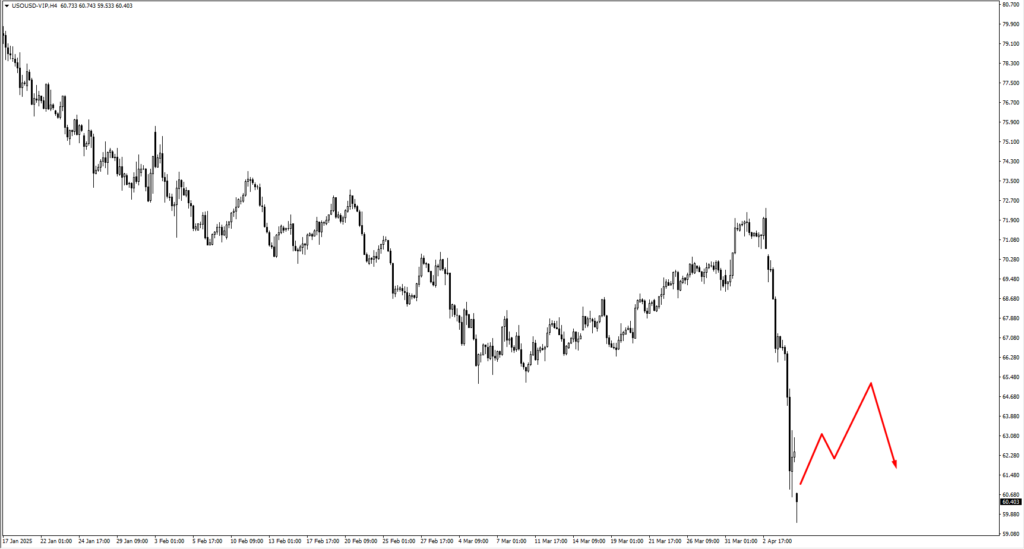
The commodities complex mirrored broader risk-off sentiment. USOil broke below the 63.764 support and remains heavy. Should trade tensions escalate, $53.00 could come into play. For now, we’re watching for bearish setups around $66.90.
Gold extended its decline on Friday. If it pauses to consolidate, the $3090 level becomes a key test area for sellers to re-engage.
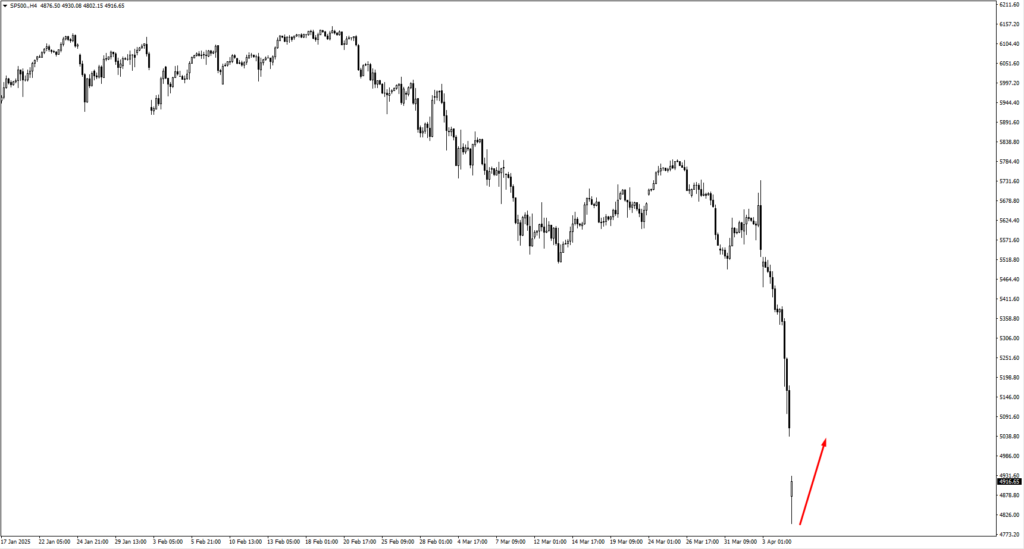
The SP500 took a more dramatic turn, breaking down below the 5093.65 swing low and officially entering a technical bear market—a 21.90% decline from recent highs. Historically, we’ve only seen three bear markets in the past five years, one of which coincided with a recession. This context underscores the risk of further downside, though past cycles have also shown that sharp declines can precede equally sharp recoveries. We’re staying cautious and tracking structure closely to determine if this is exhaustion or the start of deeper capitulation.
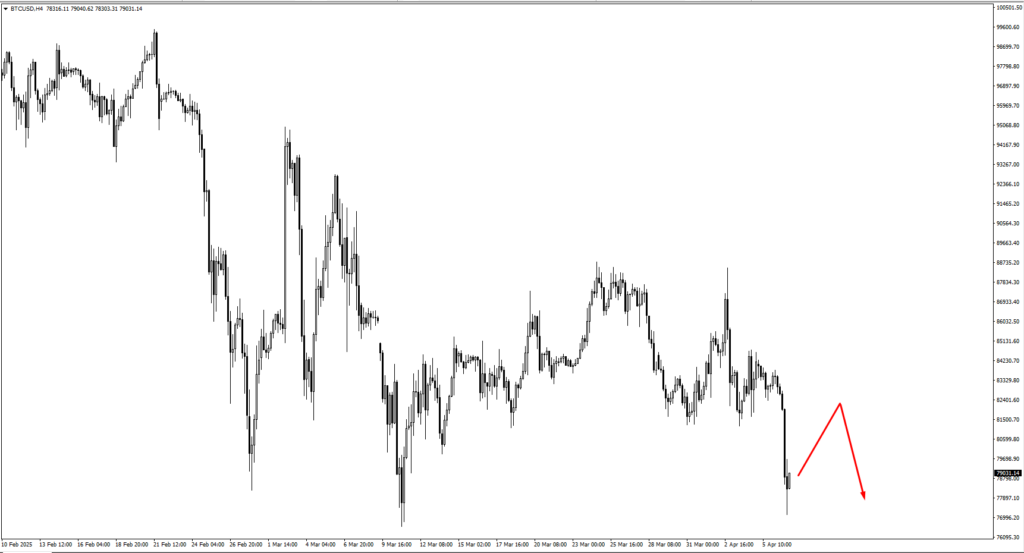
Bitcoin remains under pressure as well. If it consolidates near current levels, the $83,050 area becomes a zone to watch for renewed selling. A deeper breakdown could bring price into the $74,000 region.
Finally, Natural Gas (NatGas) attempted to rally but failed, trading lower into a vulnerable structure. If price consolidates, we’re watching for bearish setups near $4.03.
Across the board, this week’s movements tell a story of retreat, repricing, and caution. Until volatility cools and fundamental clarity returns—especially around inflation and central bank policy—price action will remain sensitive, and risk appetite limited. We continue to focus on levels that offer structure and confirmation rather than prediction.
Key Events This Week
This week may look quiet on the surface, but it’s carrying more weight than the calendar suggests. With markets already on edge and sentiment vulnerable, even low-volume data can trigger meaningful shifts in direction. We’re tracking a handful of releases that could either validate current pricing or force another wave of repricing across risk assets.
The biggest focus is Thursday’s U.S. CPI print, forecasted at 2.60% year-over-year, down from the previous 2.80%. A soft reading here would give markets permission to continue leaning into the rate cut narrative—particularly after last week’s shift in Fed futures. But any upside surprise, even marginal, could reset expectations quickly. With the Fed holding its ground and inflation still above target, a hot CPI print would reignite policy concerns and likely add fuel to the current equity drawdown.
Ahead of that, we’ll be watching Wednesday’s RBNZ rate decision, where the forecast calls for a cut to 3.50% from 3.75%. The New Zealand dollar has already been trading lower from the 0.5870 level, and a confirmed cut could press it further toward 0.5700. While not a global bellwether, the RBNZ’s decision may be seen as a test case for how central banks in smaller, export-dependent economies are navigating weakening demand.
Friday brings two more readings worth attention: U.S. PPI m/m, forecasted at 0.20% (up from 0.00%), and UK GDP m/m, expected to shift from -0.10% to +0.10%. These aren’t headline drivers on their own, but taken together, they’ll contribute to the larger inflation and growth narrative. If the PPI moves higher, it may undercut the softer CPI hopes and revive concerns about upstream pricing pressures. Meanwhile, any growth beat out of the UK could offer brief support to GBP, especially as it hovers near the 1.2820 zone—but the broader trend remains fragile.
We’re approaching these events with a cautious stance. None of them alone will likely dictate policy, but together, they build the data mosaic the Fed and other central banks rely on. In a week without much on the surface, it’s what lies beneath the numbers that may matter most.









